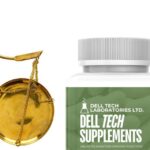Consultation on New Proposed GMP Guidance for Natural Health Products in Canada
By: Jackie Menzies Yarnton, PRINCIPAL REGULATORY CONSULTANT, email
Consultation on New Proposed GMP Guidance for Natural Health Products in Canada
Introduction
Earlier this year, Health Canada moved the review of NHP site licenses from the Health Products and Food Branch (which covers NNHPD) to the Regulatory Operations and Enforcement Branch (ROEB) of Health Canada. This move was made to consolidate activities within Health Canada, as ROEB is currently responsible for establishment licensing for Drugs and Medical Devices, as well as inspections of all sites. This should additionally provide more clarity and consistency between site licensing reviews and site inspections.
Subsequent to this move, Health Canada has opened a consultation on the draft updated Good Manufacturing Practices (GMP) guidelines for Natural Health Products (NHPs). This update aims to increase clarity of the GMPs, as well as to modernize the current guidance, published in 2015, ensuring it remains relevant and effective in communicating how NNHPD expects NHP license and site license holders to behave.
Overview of Proposed Changes
The draft updated GMP guide for NHPs introduces several significant changes aimed at improving clarity, usability, and flexibility:
- Enhanced Clarity and Ease of Use: The guidance document has been restructured and expanded to provide clearer guidance while maintaining flexibility for diverse NHP operations.
- Alignment with Government of Canada Standards: Makes the guidance document compliant with HC’s requirements for clear language, accessibility, and format.
- Updated Quality Control and Testing Requirements: Updates the requirements by taking advancements in analytical methods and quality assurance practices into account.
- Enhanced Traceability and Supply Chain Management: Stronger guidance on requirements for supply chain management and traceability.
- Integration of Risk Management Principles: Includes more modern risk management principles.
- Addressing New Product Forms and Technologies: Includes considerations for new product forms and manufacturing technologies in the area of NHPs.
Detailed Comparison
| Section | Current GMPs | Proposed GMPs |
| General Structure and Format |
|
|
| Scope and Applicability |
|
|
| Quality Systems |
|
|
Risk Management |
|
|
| Section 45 – Premises
|
|
|
| Section 46 – Equipment
|
|
|
| Section 47 – Personnel
|
|
|
Section 48 – Sanitation Program |
|
|
Section 49-50 – Operations |
|
|
Section 51 – Quality Assurance |
|
|
Section 52 – Stability |
|
|
Sections 53-58 – Records |
|
|
Sections 59-60 – Sterile Products |
|
|
Section 61 – Samples |
|
|
| Section 62 – Recall Reporting
|
|
|
Impact to Industry
- Improved Compliance: Improved, clearer guidelines should lead to better understanding and implementation of GMP requirements, across the industry.
- Enhanced Product Quality and Safety: More explicit controls and better-defined processes should result in higher GMP compliance, leading to increased quality and safer NHPs for consumers.
- Global Competitiveness: Alignment with international best practices enhances the global competitiveness of Canadian NHP manufacturers and brands.
Conclusion
These proposed GMP guidelines are a step in the right direction to support the growing and evolving NHP industry in Canada. These changes align Canadian requirements more closely with global standards, and follow a more comprehensive quality system approach.
Key changes include:
- More comprehensive and detailed guidance of all GMP sections
- Greater emphasis on comprehensive quality systems, risk management, continuous improvement and using data to drive quality decisions and improvements.
- Expanded scope to cover more activities/entities in the NHP supply chain
- Alignment with international standards and best practices
- Increased focus on data integrity and electronic records management
The consultation period is open from October 15, 2024, to December 16, 2024. This consultation is a valuable opportunity for industry stakeholders, to provide feedback and shape the future of GMP requirements for NHPs in Canada. By understanding the key changes and engaging in the consultation process, we can ensure that the updated guide effectively addresses the evolving needs of the NHP industry. If you have any questions as to how these changes will affect your business, please contact us and we’d be happy to help!
How Dell Tech Can Help

Unlock the full potential of your Natural Health Products business with Dell Tech’s expert services! We specialize in crafting tailored Standard Operating Procedures for your Quality Management System, ensuring that your operations meet the highest industry standards. Our team will meticulously review your finished product specifications and test reports, conduct comprehensive GMP audits, and provide essential GMP training to keep your staff informed and compliant.
Looking to navigate the regulatory landscape? We can seamlessly prepare and submit your NHP license applications, assist you in obtaining your Site Licence, and even act as your trusted Importer of Record. Dell Tech is fully equipped to submit alternative GMP evidence to the NNHPD, including Quality Assurance Reports (QAR) and Foreign Site Reference Number (FSRN) Authorization. We can also support your application for a Drug Establishment Licence (DEL).
Don’t leave your compliance to chance—partner with Dell Tech for a smoother, more efficient path to regulatory success. Contact us today to learn how we can elevate your business and ensure your products meet all necessary standards!

DELL TECH HAS PROVIDED PROFESSIONAL, CONFIDENTIAL CONSULTING SERVICES TO THE SPECIALTY CHEMICAL INDUSTRY IN CANADA, THE USA, EUROPE AND ASIA FOR THE LAST 40 YEARS.





